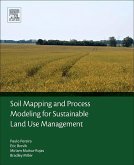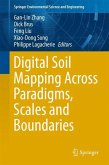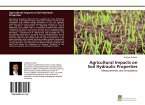Soils are a limited resource. Information about soils is needed to assess and monitor its quality and to ensure a sustainable soil management. The acquisition of soil data is limited by the available amounts of time and money. Visible and Near Infrared Spectroscopy (VNIRS) measures the portion of reflected energy at wavelengths between 300 and 2500 nm and represents a novel, non-destructive technique allowing for fast and inexpensive soil analyses. In the present work, VNIRS was used to estimate organic carbon and total nitrogen contents of soil (samples) - in the laboratory as well as directly (in situ) in the field. In addition, the effect of soil moisture on VNIR soil reflectance was addressed. The presented results confirm the ability of VNIRS to replace classical laboratory analyses of soils. Furthermore, the potential and the pitfalls of in situ measurements are illustrated. Besides, this text also provides an extensive and comprehensible introduction into the principles and the state of the art of Near Infrared Spectroscopy as well as the used statistical calibration and validation procedures.








